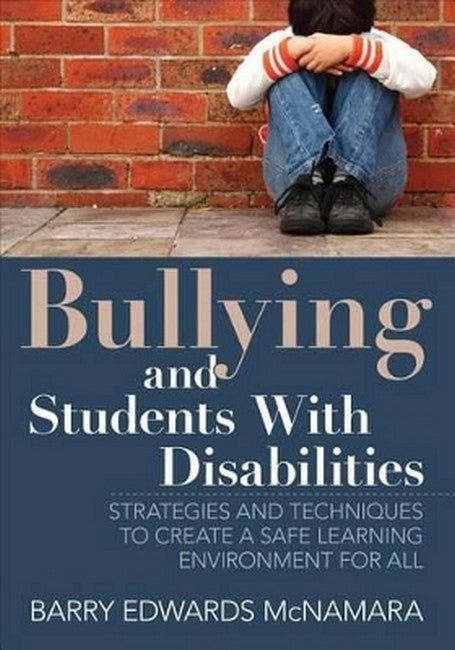Acknowledgments About the Author 1. What is Bullying? What is Bullying? Who are the Bullies? Who are the Victims? Schools and Bullying What Causes Bullying? What About the Rest of the Students? Gender Differences Prevalence Summary Test Yourself 2. Why Are Students With Disabilities Targeted? Introduction The Nature of Disabilities Classification of Students With Disabilities Non-Categorical Approach Classroom Placements Summary Test Yourself 3. How to Identify Bullies and Their Victims How to Identify Bullies How to Identify Victims Types of Victims Early Identification Assessing the Problem Summary Test Yourself 4. Creating a Schoolwide Program Components of an Effective Program to Reduce Bullying Evidenced-Based Programs Including all Students in a Schoolwide Program Needs Assessment Differentiate Content and Delivery Vary the Method of Presentation Use a Variety of Reading Material Vary the Level of Difficulty Teach Attending Skills Teach Memory Skills Managing the Collaborative Classroom Summary Test Yourself 5. What Every Teacher Must Do Know Your District's Policy Modify the Schoolwide Program Provide Instruction for Dealing With Bullies Create a Kind and Caring Classroom Provide Resources for Your Students Collaborate With Families and the Community Address Cyberbullying Summary Test Yourself 6. What Every Paraprofessional Should Know Roles and Responsibilities How to Intervene Paraprofessional Handbook Roles and Responsibilities in Bullying Prevention/Intervention Confidentiality Summary Test Yourself 7. What Every Parent Should Know Signs Your Child Might be a Victim What Should You Do? What To Do if Your Child is a Bully Be a Good Role Model Provide Social Skills Training How to Deal With Cyberbullying Use Your Child's IEP Use Section 504v of the Rehabilitation Act of 1973 Best Practices for Parents When to Seek Professional Help Summary Test Yourself 8. Teacher Supports And Techniques Utilize the Existing PBS Utilize a Collaborative Teaching Model Create an Empathetic Classroom Differentiate Instruction Include Social Skills and Bully Prevention Into the Curriculum Summary Test Yourself References Index
Request Academic Copy
Please copy the ISBN for submitting review copy form
Description
"It has long been known that students with disabilities are targets for bullying or exhibiting bullying behavior; this book provides information on how teachers, paraprofessionals and parents can address bullying with students with disabilities within the school wide program to meet the individual needs of the child and create a safer school environment." -- Barbara Hayhurst, Special Education Teacher "This book is a must have for all schools. Bullying of students with disabilities is often unaddressed in many schools. This book provides sound advice and guidance to all school-based staff. It shines a light on a problem that often goes unnoticed." -- Mary Reeve, Educational Administrator "Dr. McNamara provides an excellent reference for teachers, administrators and parents regarding bullying in schools. His thoughtful discussion of the implications for students with disabilities offers significant insights into how and why a youngster's disability may make them a target for bullying as provocative victims. Educators and parents alike will benefit from the subtle yet important distinction between a provocative victim and their bully." -- Patrick Harrigan, Deputy Superintendent "McNamara addresses classroom and playground teasing, taunting and physical aggression aimed at atypical students. 'There is a very limited but emerging body of research that suggests that students with disabilities are more likely to be victims than their general education peers,' McNamara writes. 'Why are students with disabilities more likely to be targeted? The most obvious reason is their vulnerability.' The book goes on to suggest how to create a schoolwide bullying prevention program, detail what every teacher should do and outline intervention and coping strategies." -- Beth Whitehouse, Writer

